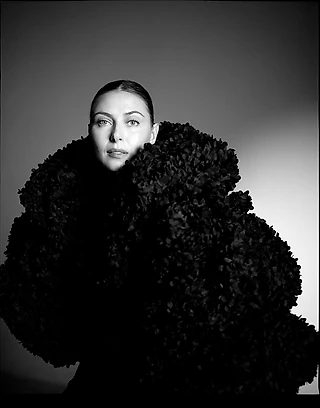Update: A Timeline - Meldonium
UPDATE: A TIMELINE – MELDONIUM
ISABELLE WESTBURY
Before 7 March 2016, the day that Maria Sharapova announced that she had tested positive for meldonium, few outside the athletics world had heard of this drug. As it turned out, few within this world had either, or had least heard that it was on the World Anti-Doping Agency’s (WADA) Prohibited List.
In the days and months since, the word ‘meldonium’ has barely stayed away from the sporting pages. Here’s an up-to-date (and constantly developing) timeline of meldonium and its impact on sport worldwide.
3 May 2016 – The International Tennis Federation (ITF) announces that Belarusian tennis player SERGEY BETOV will not be suspended from the sport, despite a positive meldonium test. The ITF accepted that it was ‘more likely than not’ that the substance found in his sample came from taking meldonium no later than October 2015.
29 April 2016 – In an exclusive interview with The Sports Integrity Initiative, investigative journalist Hajo Seppelt says that he ‘doesn’t blame Russian athletes for use of meldonium’, but instead that ‘it is another symptom of the systematic doping in Russia that he has identified through his previous documentaries’.
27 April 2016 – WADA publishes its second annual Anti-Doping Rule Violations (ADRVs) Report, giving detailed doping statistics for the calendar year 2014. It is revealed that RUSADA, who tested 12,556 samples in 2014, did not report a single TUE (Therapeutic Use Exemption) explanation. Since 1st January 2016, 27 Russian athletes had tested positive for meldonium, many having cited health problems as a reason for its use.
26 April 2016 – The International Weightlifting Federation (IWF) decides not to provisionally suspend three weightlifters after they tested positive for meldonium, but does not clear them of committing an anti-doping rule violation (ADRV). The athletes are named as Armenian HRIPSIME KHURSHUDYAN, Russian 2013 European Junior Champion LYAYSAN MAKHIYANOVA, and Pole KRZYSZTOF SZRAMIAK.
22 April 2016 – Provisional suspensions imposed on three speed skaters who tested positive for meldonium are lifted. They are PAVEL KULIZHNIKOV, SEMION ELISTRATOV and EKATERINA KONSTANTINOVA. A Russian water polo player, Alexey Bugaychuk, also has their provisional suspension lifted.
22 April 2016 – Provisional suspensions imposed on three speed skaters who tested positive for meldonium are lifted. They are Pavel Kulizhnikov, Semion Elistratov and Ekaterina Konstantinova. A Russian water polo player, Alexey Bugaychuk, also has their provisional suspension lifted.
21 April 2016 – The Russian Anti-Doping Agency (RUSADA) decides not to ban seven athletes who tested positive for meldonium, finding that they qualified for the ‘no fault or negligence’ provision in the 2015 World Anti-Doping Code.
Those cleared are: Greco-Roman wrestlers SERGEI SEMENOV and DAVIT CHAKVETADZE; cyclist ANASTASIA CHULKOVA; and track and field athletes NADEZHDA KOTLYAROVA, GULSHAT FAZLETDINOVA, ANDREY MINZHULIN and OLGA VOVK.
19 April 2016 – The International Association of Athletics Federations (IAAF) lifts the provisional suspension imposed on Bulgarian triple jumper GABRIELA PETROVA, runner up at the 2015 European Indoor Championships, after she tested positive for meldonium. The move follows WADA’s guidance note on meldonium excretion times.
The International Biathlon Union (IBU) lifts a provisional suspension on Ukrainian biathlete ARTEM TYSHCHENKO. It also submits a request to the Anti-Doping Hearing Panel (ADHP) to lift a provisional suspension on Russian biathlete EDUARD LATYPOV.
20 April 2016 – The Ethics Commission of the Austrian National Anti-Doping Agency (NADA) criticises WADA’s handling of the meldonium issue, saying that it has ‘done sport a disservice and anti-doping work as been dealt a severe setback’.
18 April 2016 – Grindeks, the manufacturer of mildronate, submits an open letter to the World Anti-Doping Agency (WADA) asking it to remove meldonium from its Prohibited List. Juris Bundulis, Grindeks’ Chairman, says that the use of meldonium does not contradict the spirit of sport, but has instead helped to save many athletes’ lives.
Russian sprinter NADEZHDA KOTLYAROVA reportedly has her provisional suspension for meldonium lifted following WADA’s guidance note. Five Russian track cyclists also reportedly have their suspensions lifted.
16 April 2016 – The Fédération Internationale de Natation (FINA) decides to maintain the provisional suspension of Russian swimmer YULIA EFIMOVA until a hearing by the FINA Doping Panel. Efimova claimed that the drug was not prohibited the last time she took it.
15 April 2016 – Ukrainian pentathlete ANASTASIYA MOKHNYUK tests positive for meldonium. The International Weightlifting Federation (IWF) lifts the provisional suspension of Belarus weightlifter ANDREI RYBAKOV, as a result of WADA’s guidance note. RUSADA also lifts provisional suspensions imposed on skeleton racer PAVEL KULIKOV and bobsledder NADEZHDA SERGEEVA
14 April 2016 – According to local reports, provisional suspensions of six Georgian wrestlers are lifted. The athletes reportedly cleared are: BEKA LOMTADZE, AVTANDIL KENTCHADZE, BEKA BUJIASHVILI, GIORGI MESHVILDISHVILI, MATE SOPADZE and DAVIT MODZMANASHVILI.
The Ultimate Fighting Championship (UFC) say that Russian fighter ISLAM MAKHACHEV has tested positive for meldonium in a recent out-of-competition test.
13 April 2016 – A WADA statement on its new guidance note says that there have been ‘172 positive samples‘ since it was banned on 1st January 2016.
Russian boxer IGOR MIKHALKIN tests positive for meldonium. Claims that he stopped taking it before it was banned by WADA.
Czech wrestler PETR NOVAK tests positive for meldonium. Reportedly stopped taking the drug before he tested positive in January this year.
Russian swimmer YULIYA EFIMOVA files a request to lift her provisional suspension for testing positive for meldonium, arguing that the drug was not prohibited the last time she took it.
12 April 2016 – EVA TOFALVI, a Romanian biathlete, is reported in local news to have tested positive for meldonium.
11 April 2016 – In a guidance note WADA recommends that anti-doping organisations (ADOs) should consider a finding of ‘no fault or negligence’ where an athlete can show that they stopped taking meldonium prior to 1 January 2016.
WADA also recommends that following an adverse analytical finding (AAF) for meldonium, results management should only proceed if the athlete admits taking meldonium after 1 January, or if evidence suggests it was taken after 1 January.
7 April 2016 – The Russian Ice Hockey Federation (RIHF) replaces almost its entire squad for the men’s U18 World Championship. The RIHF President dismisses rumours that the decision was made due to the danger of them testing positive for meldonium.
6 April 2016 – The IBU suspends meldonium proceedings after a hearing for Ukrainian biathletes OLGA ABRAMOVA and ARTEM TYSHCHENKO ambiguity over the rate at which the drug is excreted from the body.
5 April 2016 – The IWF confirms that ANDREI RYBAKOV, of Belarus, had returned an AAF for meldonium.
31 March 2016 – Two Russian cyclists, ANASTASIA CHULKOVA and PAVEL YAKUSHEVSKY, report positive tests for ‘low levels’ of meldonium.
29 March 2016 – Russian pharmacies report a dramatic rise in the demand for meldonium, with sales of the drug reportedly having increased by 50% since tennis star MARIA SHARAPOVA tested positive in March.
28 March 2016 – Bulgarian athlete GABRIELA PETROVA denies any wrongdoing after testing positive for meldonium.
24 March 2016 – A WADA spokesman says that 123 meldonium positives have been recorded since 1st January 2016.
22 March 2016 – Russian swimmer YULIYA EFIMOVA says that she will challenge her provisional suspension after testing positive for meldonium, arguing that the drug was not prohibited the last time she took it. Russian 5,000m runner GULSHAT FAZLETDINOVA becomes the latest Russian to test positive for meldonium.
21 March 2016 – ANDREY MINZHULIN admits to testing positive for meldonium in a media interview with Russian website RSport, where he claims that the Prohibited List was not translated into Russian until October 2015.
The first Russian track-and-field athlete, NADEZHDA KOTLYAROVA, reportedly tests positive for meldonium. Kotlyarova says that she had ‘stopped taking this stuff long before it was banned’.
20 March 2016 – Romanian athlete MIREIA LAVRIC tests positive for meldonium. The Romanian Athletics Federation (FRA) President says that he had stopped taking meldonium in December, before it was banned by WADA. FRA
18 March 2016 – The International Skating Union (ISU) confirms that the B samples of three Russian speed skaters confirms their positive tests for meldonium. The skaters are SEMEN ELISTRATOV, EKATERINA KONSTANTINOVA and PAVEL KULIZHNIKOV.
The Ukrainian Athletics Federation (UAF) withdraws NATALIYA LUPU from the World Indoor Championships, after WADA expresses concerns about her use of meldonium.
17 March 2016 – The Russian swimming federation confirms that it has temporarily suspended YULIA EFIMOVA, after receiving documents from FINA.
Russian bobsledder NADEZHDA SERGEEVA reportedly tests positive for meldonium.
In an interview with The Sports Integrity Initiative, WADA’s Chief Operating Officer and General Counsel, Olivier Niggli, defends WADA’s actions regarding meldonium, He argues that it is not WADA’s job to inform athletes, but international federations and NADOs.
15 March 2016 – NIKOLAI KUKSENKOV tests positive for meldonium, which is later confirmed by the Russian Gymnastics Federation (FSGR).
14 March 2016 – A WADA spokesman says that the number of meldonium positives recorded since 1st January 2016 had reached the 100 mark.
12 March 2016 – Tennis player MARIA SHARAPOVA is provisionally suspended for an Anti-Doping Rule Violation (ADRV), pending determination of the case.
World Rugby confirms that it has provisionally suspended two Russia national sevens players following potential ADRVs for meldonium. These are ALEXEY MIKHALTSOV and ALENA MIKHALTSOV, members of the men’s and women’s sevens squads respectively.
11 March 2016 – One of Sharapova’s sponsors, Head, questions WADA’s decision to add Meldonium to its banned substances list, arguing that it should only have imposed a dosage limitation.
9 March 2016 – The Russian Biathlon Union (RBU) announces on 9 March that EDUARD LATYPOV had tested positive for meldonium earlier in the year. In the two days before Sharapova’s announcement that she had tested positive, Wikipedia’s meldonium page reported 870 views. In the two days after Sharapova’s announcement, it was viewed 1.57 million times.
8 March 2016 – Russian EKATERINA BOBROVA and her partner, DMITRI SOLOVYOV, withdraw from the World Figure Skating Championships after she tests positive for meldonium.
Russian volleyball player ALEXANDER MARKIN tests positive for meldonium.
7 March 2016 – Tennis player MARIA SHARAPOVA holds a press conference revealing her provisional suspension and positive test for meldonium
6 March 2016 – An ARD/WDR documentary alleging that banned Russian coaches are continuing to train Russian athletes and supply them with prohibited substances also says that a 2015 study showed that 724 of 4,316 Russian athletes (17%) were found to have meldonium in their system.
2 March 2016 – Sharapova is charged with an ADRV by the Tennis Anti-Doping Programme (TADP).
1 March 2016 – World indoor 1,500m champion ABEBA AREGAWI is provisionally suspended by the Swedish Athletics Association (SF) after an AAF for an unnamed banned substance. Her B-sample later tests positive for meldonium.
25 January 2016 – Norwegian weightlifter RUTH KASIRYE tests positive for meldonium. 23 – 25 February – Russian Winter Championships. The Russian Athletics Federation (RusAF) later states that four of its athletes tested positive for meldonium during these Championships.
26 January 2016 – MARIA SHARAPOVA provides an anti-doping sample to the TADP during the 2016 Australian Open (18 – 31 January 2016).
23 January 2016 – Ukrainian biathlete ARTEM TYSHCHENKO delivers an AAF for meldonium.
14 January 2016 – Russian cyclist EDUARD VORGANOV returns an AAF for meldonium following an out-of-competition test.
10 January 2016 – OLGA ABRAMOVA, a Ukrainian biathlete, tests positive for meldonium.
8 January 2016 – ALEXEY BUGAYCHUK, a Russian water polo player, tests positive for meldonium at the Men’s European Water Polo Championships in Belgrade, a spokesperson later tells the news agency TASS that he had stopped taking meldonium in October.
1 January 2016 – WADA’s 2016 Prohibited List comes into force.
30 Sept 2015 – WADA approves its 2016 Prohibited List, which includes meldonium under the section of ‘Hormone and Metabolic Modulators’.
16 Sept 2015 – WADA publishes a summary of the ‘Major Modifications and Explanatory Notes’ for its 2016 Prohibited List, which includes adding meldonium because of ‘evidence of its use by athletes with the intention of enhancing performance’.
12 – 28 June 2015 – Baku 2015 European Games. A study in the British Journal of Sports Medicine (BMSJ) reveals that more than 70% of the sports contested had athletes competing in which meldonium was detected. 23 (3%) of the 662 athletes tested self-reported taking the drug, but 66 (8.7%) of athlete samples subsequently analysed tested positive for meldonium.
5 April 2015 – A scientific study suggests that meldonium is being used for performance enhancing effects by endurance athletes.
29 Sept 2014 – WADA publishes its 2015 Monitoring Program, which includes meldonium.
ABOUT ISABELLE WESTBURY
Isabelle Westbury is a freelance journalist who writes for the SII. Her focus is on politics and sport, especially cricket. She has written for a number of publications including The Guardian, The Times, The Independent, The Daily Mail and The Sun, and broadcasts on cricket for the BBC. She has an undergraduate degree from Oxford University, where she was President of the Oxford Union, as well as a postgraduate degree in law. She is also Middlesex CCC women’s cricket captain.
>









Значение Марии показывает этот факт:
- За 2 дня до пресс-конференции Марии количество просмотров страницу мельдония в Википедии было 800.
- За 2 дня после пресс-конференции Марии количество просмотров страницу мельдония в Википедии было 1,570,000.
Значение Марии показывает этот факт:
- За 2 дня до пресс-конференции Марии количество просмотров страницу мельдония в Википедии было 800.
- За 2 дня после пресс-конференции Марии количество просмотров страницу мельдония в Википедии было 1,570,000.